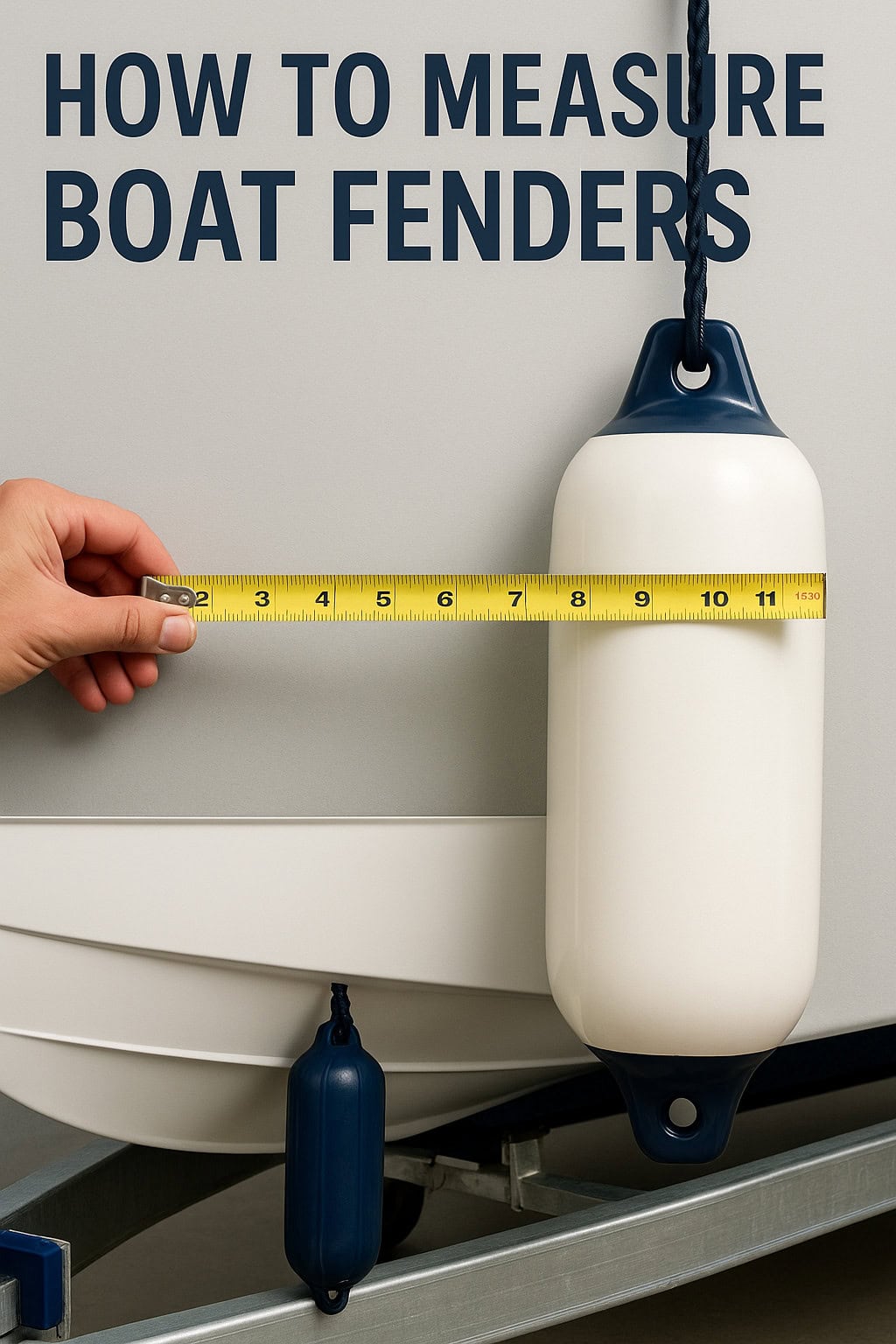How to measure boat fenders is a critical skill every boat owner should master. Boat fenders protect your vessel from impact damage during docking, and choosing the wrong size can result in costly repairs. In this guide, we’ll explain why proper fender measurement matters, how to get it right, and which types of fenders best suit your boat.
How fenders protect your hull from damage starts with understanding their role. These seemingly simple tools bear the brunt of scrapes, pressure, and waves, especially during docking or mooring. Their function depends heavily on their correct sizing and placement—that’s where fender measurement comes into play.
Why Proper Fender Measurement Matters
The cost of choosing the wrong size boat fender can be more than cosmetic. An undersized fender might fail to prevent hull damage, while an oversized one may create storage problems or interfere with other equipment. Accurate measurement ensures balance between protection, practicality, and storage.
Common docking mistakes related to fender sizing often stem from using a one-size-fits-all approach. However, your boat’s size, beam, and weight all influence fender size. Learning how to choose the right size fender for your boat helps prevent missteps at the dock.
How to Measure Boat Fenders Correctly
Step 1: Measure your boat’s length and beam before selecting a fender. Fender size correlates directly with boat size; the longer and heavier the vessel, the larger your fenders must be. A general rule is one inch of fender diameter per every four to five feet of boat length.
Step 2: Understand fender diameter requirements by boat type and docking situation. For example, rougher mooring conditions demand larger-diameter fenders, even if your boat is relatively small. This makes knowing what size fenders for a 25 foot boat essential for correct protection.
Step 3: Match fender type to hull shape to ensure proper performance. A wide-beam cruiser may benefit more from cylindrical fenders, while a rounded sailboat hull may require spherical fenders. This highlights the importance of measuring cylindrical vs round boat fenders for optimal protection. Mastering how to measure boat fenders helps you avoid sizing errors and ensures your fenders do their job effectively.
Boat Fender Size Chart Guide
Quick reference table for boat length vs fender size can save you time. For most boats:
Boat Length | Fender Diameter | Number of Fenders |
< 10 ft | 3-4 inches | 2 |
10-20 ft | 4.5-5.5 inches | 3 |
20-30 ft | 6.5-8 inches | 3-4 |
30-40 ft | 10-11 inches | 4-5 |
What size fenders for a 25 foot boat should be? At least 6.5 to 8 inches in diameter and 2 feet in length, with a minimum of three fenders for standard docking.
Using a chart is the most reliable method when learning how to measure boat fenders for different hull sizes.
Types of Boat Fenders and Their Measurements
Cylindrical fenders vs round ball fenders vary not just in shape, but in purpose. Cylindrical fenders (the most common) are ideal for vertical or horizontal mounting, while round “buoy-style” fenders are better suited for heavy-duty use or rough conditions.
Flat fenders and inflatable options offer space-saving alternatives. Flat fenders are handy for narrow slips and inflatable fenders are lightweight and easy to store. No matter the type, understanding fender length vs diameter ensures your setup provides maximum hull coverage.
Fender length vs diameter: what you need to know is simple. Diameter determines how far the fender keeps the hull from surfaces, while length affects how much vertical hull area is protected. Taller boats or higher freeboards require longer fenders.
How Many Fenders Do You Need?
General rules based on boat size suggest at least one fender for every 10 feet of boat length, with a minimum of three. Always round up when in doubt, especially if you sail in tidal or windy environments.
Additional fenders for high wind or current conditions are recommended. In rough docks or unfamiliar harbors, extra fenders offer peace of mind. Ask yourself not just “how many,” but how many boat fenders do I need for varying conditions.
Tips for rafting up with other boats include placing fenders on both sides—even if only one side faces another boat. Also, alternate sizes and placements for maximum shock absorption.
Proper Boat Fender Placement Techniques
Where to hang fenders on the hull makes a major difference. Always tie them at the right height, so they contact the dock edge or piling—not hang too high or drag in the water.
Ideal fender spacing during docking involves placing one fender near the widest beam (midship), one near the stern, and one at the bow. In longer boats, add a fourth in between.
Bow, stern, and midship considerations vary by boat. Sterns often need round fenders if they’re near outboard motors. Learning proper boat fender placement techniques prevents accidents and hull scuffs.
Storing and Maintaining Boat Fenders
Best practices for fender storage onboard include hanging fenders on rails, placing them in dedicated lockers, or using clips to secure them to lifelines. Don’t let them roll around the deck or cabin.
Cleaning and UV protection extend their lifespan. Scrub with soap and water regularly, and apply UV protectant spray to avoid cracking or fading. These tasks ensure your investment lasts.
When to replace a fender depends on its condition. Cracks, deflation, or compromised attachment points signal the need for replacement. Following a boat fender size chart guide ensures the new one fits perfectly.
FAQs About Boat Fender Measurement
Can fenders be too big? Yes—oversized fenders may obstruct walkways or be difficult to store. Choose size according to both boat and dock conditions.
Do inflatable fenders work the same? Inflatables are highly effective, especially for temporary docking or as backups. However, they require inflation checks and care in high-pressure environments.
How many fenders for a pontoon boat typically? At least four—two on each side. Pontoons have unique shapes, so consider special fender brackets or rail-mounted designs for better security.
Conclusion: Choose the Right Fender, Protect Your Boat
Final thoughts on fender sizing come down to this: take your time to measure carefully. Don’t just eyeball or guess; your hull’s protection depends on it.
Understanding how to measure boat fenders properly is essential for every boat owner who wants to protect their investment.
Save money, avoid hull damage, dock smarter by using the correct number, size, and type of boat fenders. Whether you sail a 15-foot dinghy or a 40-foot cruiser, learning how to measure boat fenders is essential knowledge for any boater.

